The British Thermal Unit (BTU) is an indicator of the firepower of your grill. Most people want extremely high BTU levels on a gas grill to cook food quickly. Want to know how to increase this BTU? Well, we did some research, and here is what we discovered.
Here are some ways to raise a gas grill's BTU:
- Ensure you have enough fuel supply.
- Reset the grill’s gas regulator.
- Adjust the grill’s knob to heat up.
- Add more solid fuel.
- Use solid fuel that radiates more heat.
- Adjust the airflow.
- Close the grill’s lid.
- Clean the grill regularly.
We will go over each of those methods mentioned above in this article. We'll also provide a brief tutorial on automatically and manually starting your gas grill. Continue reading for more!
How To Increase The BTU On A Gas Grill?
![Grill meat in the garden, summer barbecue, How To Increase BTU On A Gas Grill [Step By Step Guide]](https://uooz.com/wp-content/uploads/2022/11/Grill-meat-in-the-garden-summer-barbecue-How-To-Increase-BTU-On-A-Gas-Grill-Step-By-Step-Guide.png)
BTU refers to the energy needed to increase the temperature of 1 lb of water by 1°F. About the grill, BTU ratings provide a general estimate of the amount of fuel your grill will consume throughout a specific time.
They show how much heat a burner produces at its highest output.
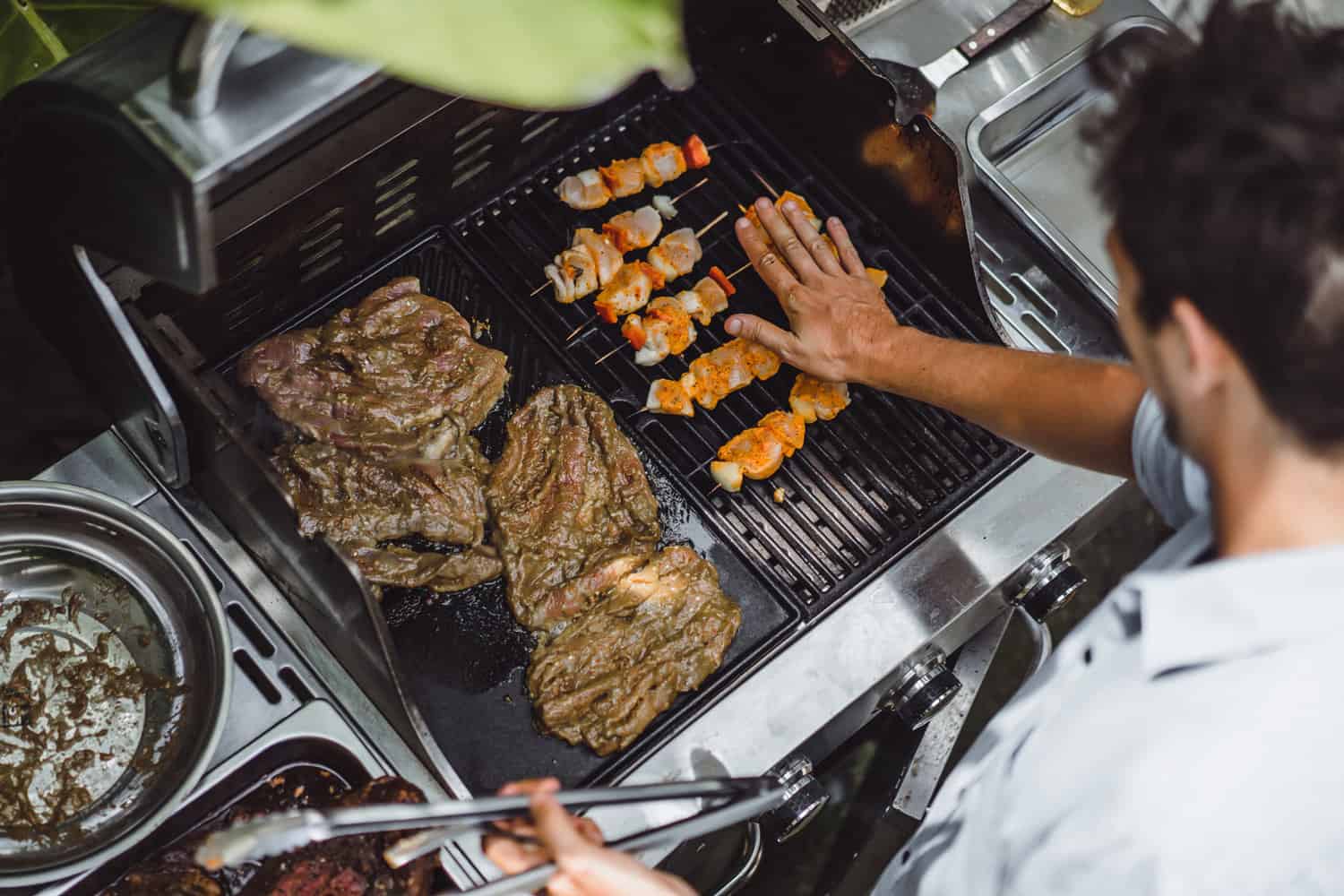
Since BTU measures energy output and fuel consumption, a grill with a high BTU rating often uses more fuel than one with a lower rating.
This BTU, however, considers every element that makes it feasible to calculate the grill's overall heat output per hour.
Therefore, the elements or factors you might need to consider to enhance BTU on a gas grill are stated below.
1. Ensure You Have Enough Fuel Supply
First and foremost, you ought to examine the fuel supply. The lack of fuel is probably the cause of the grill's inability to heat up. Even empty, an external gasoline tank can seem hefty if you're using one.
If you use liquid fuel such as propane to cook, make sure you always have a full spare tank available so you won't run out of fuel in the middle of cooking.
2. Reset The Grill’s Gas Regulator
Reset the gas regulator on your grill if you have problems with low flame and temperatures.
One of the most frequent causes of a grill not getting hot enough is a propane regulator, which is a component of all gas grills and regulates the gas flow from the propane tank to the grill.
3. Adjust The Grill’s Knob To Heat Up
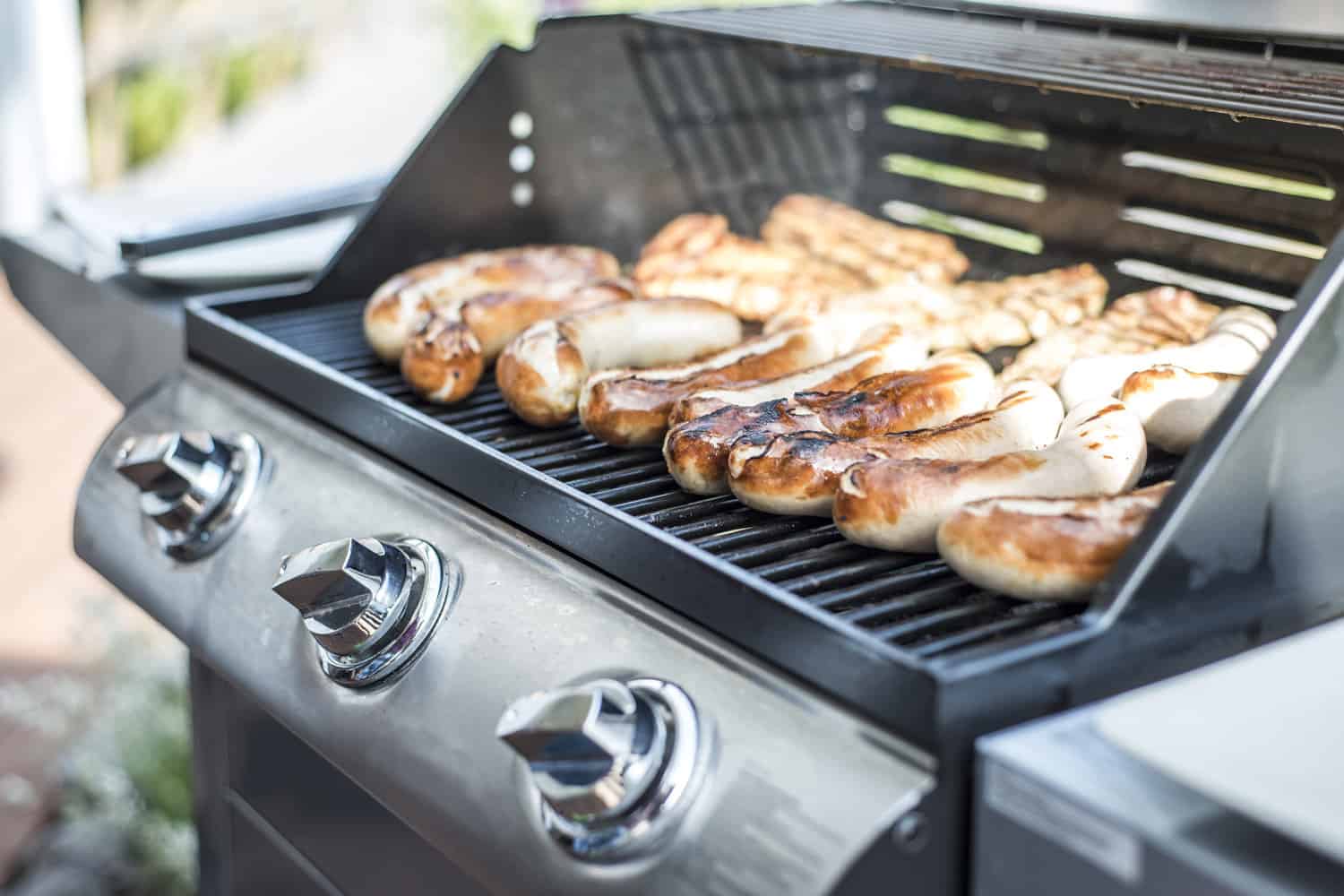
If the grill is clean, you can use more gas to light it, the knob, or switch on the grill to turn up the heat.
For information on the ideal temperature for various types and cuts of meat, consult the instruction handbook for your grill. To obtain a good sense of warmth, try practicing with more food.
4. Add More Solid Fuel
The grill's temperature will rise if solid fuels or bricks are piled around the gas lines. This is so the recipes can cook more quickly and at a higher temperature.
Solid fuels carry the heat from the gas and offer extra warmth to the cooking process. To guarantee consistent cooking, don't stack the fuel too high; instead, use only one layer.
5. Use Solid Fuel That Radiates More Heat
For gas fire pits, lava rocks offer increased performance. Compared to a bare flame coming directly from the burner, lava rocks heat and radiate heat more evenly.
Lava rocks additionally shield gas burners from cooking residue like grease and oil.
Click here to see these lava rocks on Amazon.
When using lava rocks, you need enough grates to enclose the burner. Next, put lava rocks on the grates in a single, thick layer. Turn the burners on and put the cooking grates back in place.
As your grill heats, keep the lid closed.
See these adjustable grates on Amazon.
The grill's temperature will increase to at least 500°F in about 20 minutes. The heat will not quickly decrease when the lid is opened because the heat is trapped and retained by the lava rocks.
Another type is lump charcoal, which is purer than briquettes and can ignite immediately and burn extremely hot.
However, it is challenging to maintain a steady fire and temperature on it because of the variable shapes and sizes.
Check out this lump charcoal on Amazon.
6. Adjust The Airflow
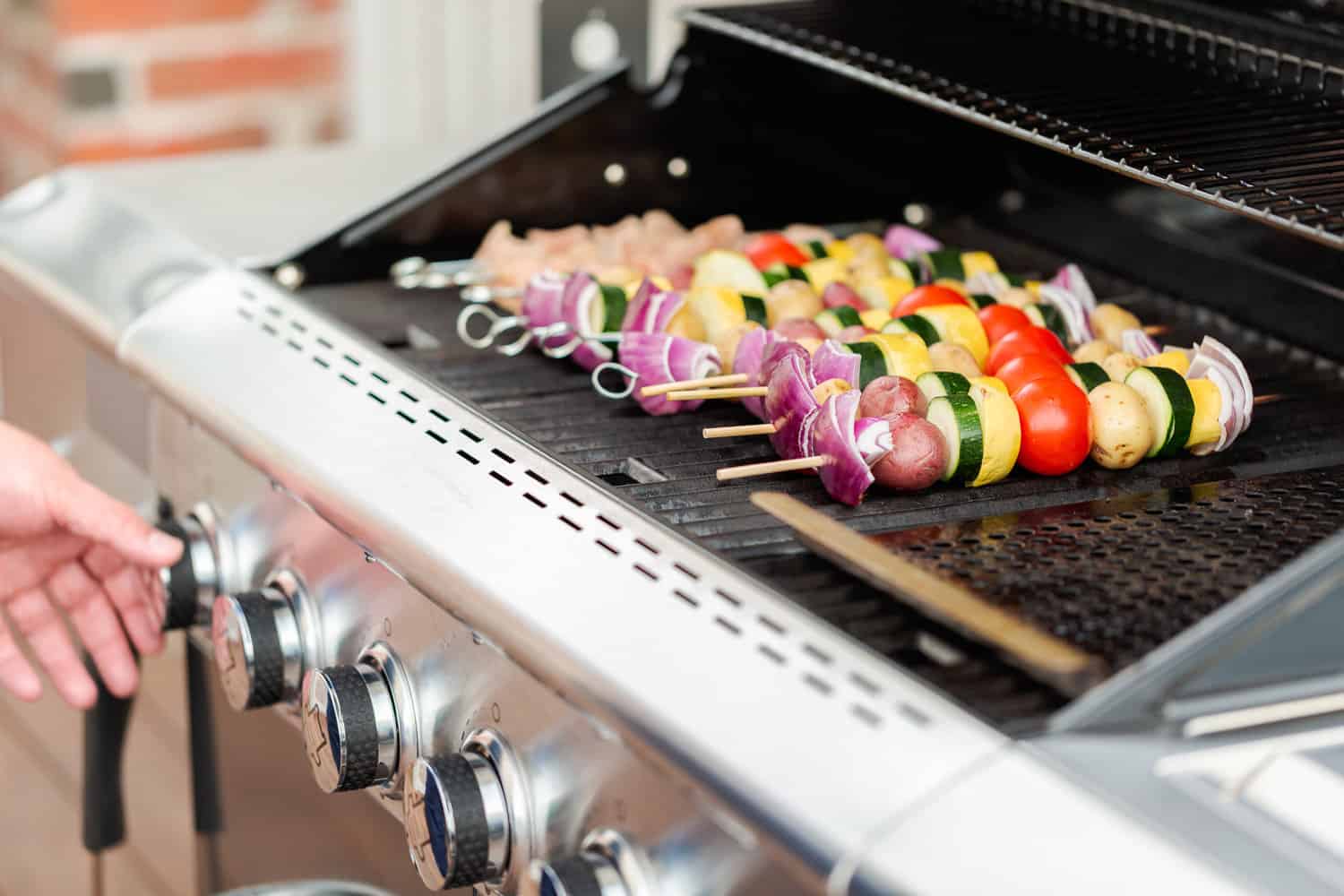
Even though airflow might not seem crucial, anybody who has created a fire knows it is essential for greater combustion.
Air is heated and moved around inside the grill as a result of the heat from the burners, which then exhausts the heated air through the exhaust port.
As a result, it is feasible to distribute the heat produced by the burner BTUs across the grill, effectively heating every area.
This also lowers the likelihood of cold patches and unwelcome smoke emissions and promotes even cooking.
The bottom of most grills is vented—a hotter fire results from opening the vents widely. If you partially close the vents, you receive less air and a colder fire.
When lighting the solid fuel and assembling the grill, ensure the vents are open. The vents in a grill can be blocked with ash if you're having difficulties getting it to light.
7. Close The Grill’s Lid
The open cover of your grill is one of the primary causes why it might not get hot enough.
It may be nice to watch the food cook. That is why purchasing a lid that allows you to see through it can be one of your finest options. The lid shouldn't be left open as a remedy.
Your grill won't burn out if you keep the lid open. The region just above the burner will be the only part of the grill that will be hot. You must secure the cover if you want your grill to heat up.
8. Clean The Grill Regularly
You must thoroughly clean the grill's burners every time you use them. Without this, the burners will get blocked and incapable of producing enough heat. Fortunately, this procedure is not too complicated.
Clear the debris from the burners, grates, and other parts with a grill brush. Do these frequently to avoid rust, heat problems, and numerous other difficulties.
Also, maintaining your grill is crucial to extending its lifespan beyond a season or two.
Click here to see this grill brush on Amazon.
How Do You Start A Gas Grill?
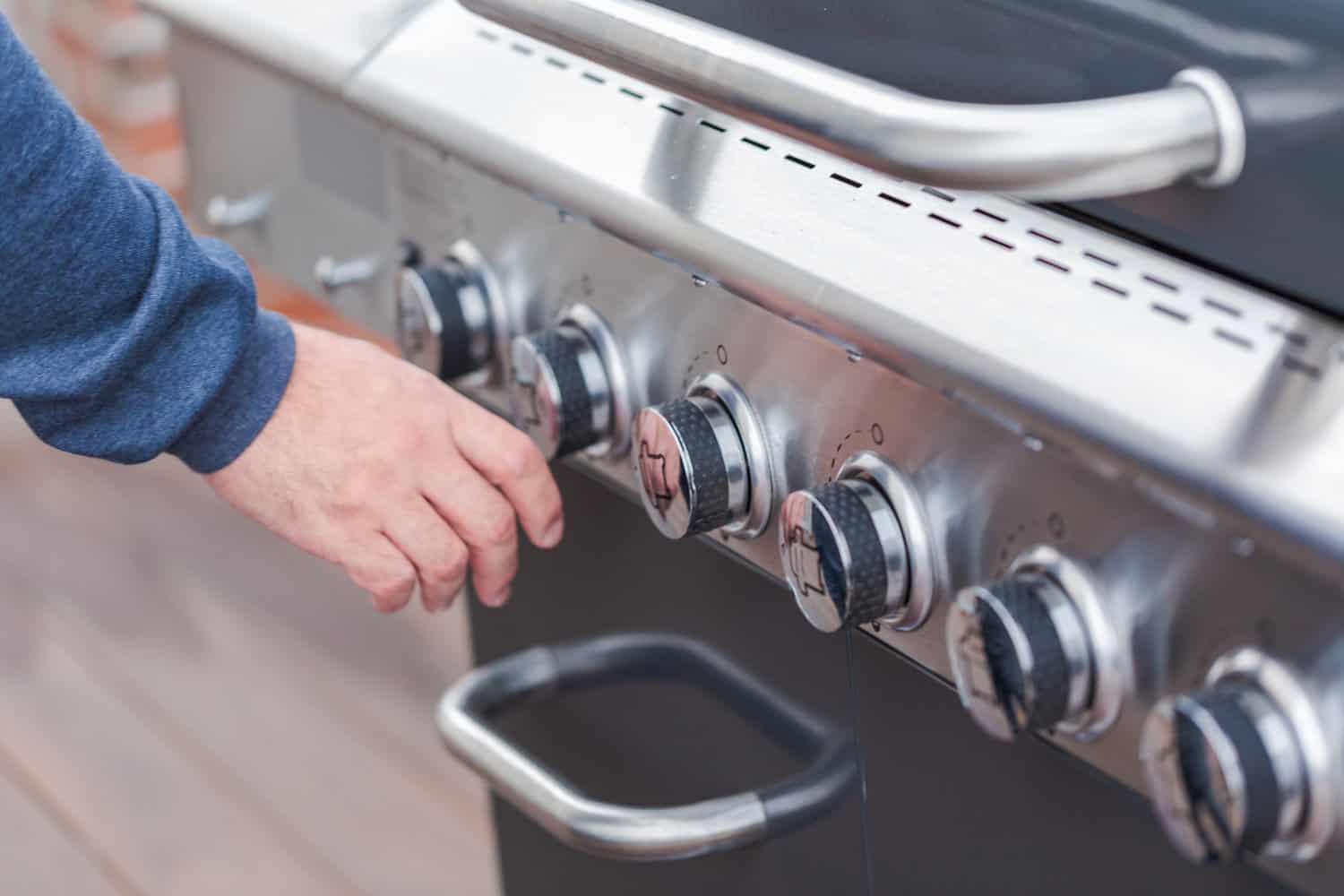
Gas grills are relatively simple in design, but you might not know where to begin if you've never grilled before. A push-button ignition system is standard on many gas grills.
However, in some older or simpler models, they are manually lit. To help you with this matter, below are the detailed instructions.
For Automatic Starting
1. Open The Lid
If your lid is closed during lighting, gas vapors may accumulate. This could result in an explosive risk. So in this situation, turn off the gas and open the lid.
Wait for the gas to disappear and proceed to the following procedure.
2. Connect Gas To The Grill (If Required)
Typically, a propane tank is used to feed gas to your grill. It is commonly kept next to, behind, or to one side of the grill. Firmly connect the gas line to the grill's gas intake and the propane tank.
The gas connection may differ depending on your grill. If you're unsure, follow the grill’s manual. If you don't have these, search online for your grill using a keyword to find a digital copy of the manual.
Sometimes, a direct hookup from some grills to the natural gas piped into your house is an option. While stationary, this gas supply performs the same functions as a tank.
3. Turn On The Gas
You turn a circular valve on top of the propane tank to achieve this. For some grills to receive the gas, you may need to open a secondary valve on the grill.
After fully opening the valve, allow the gas to go through the line to the grill for roughly a minute.
4. Start Igniting
In most cases, turn the regulator knob to its maximum setting on the front of your grill. This will enable gas to pass through the grill and up through the grate.
Press the igniter button to start a spark and ignite the gas inside the grill. For optimal results, adhere to your grill's ignition directions.
For Manual Starting
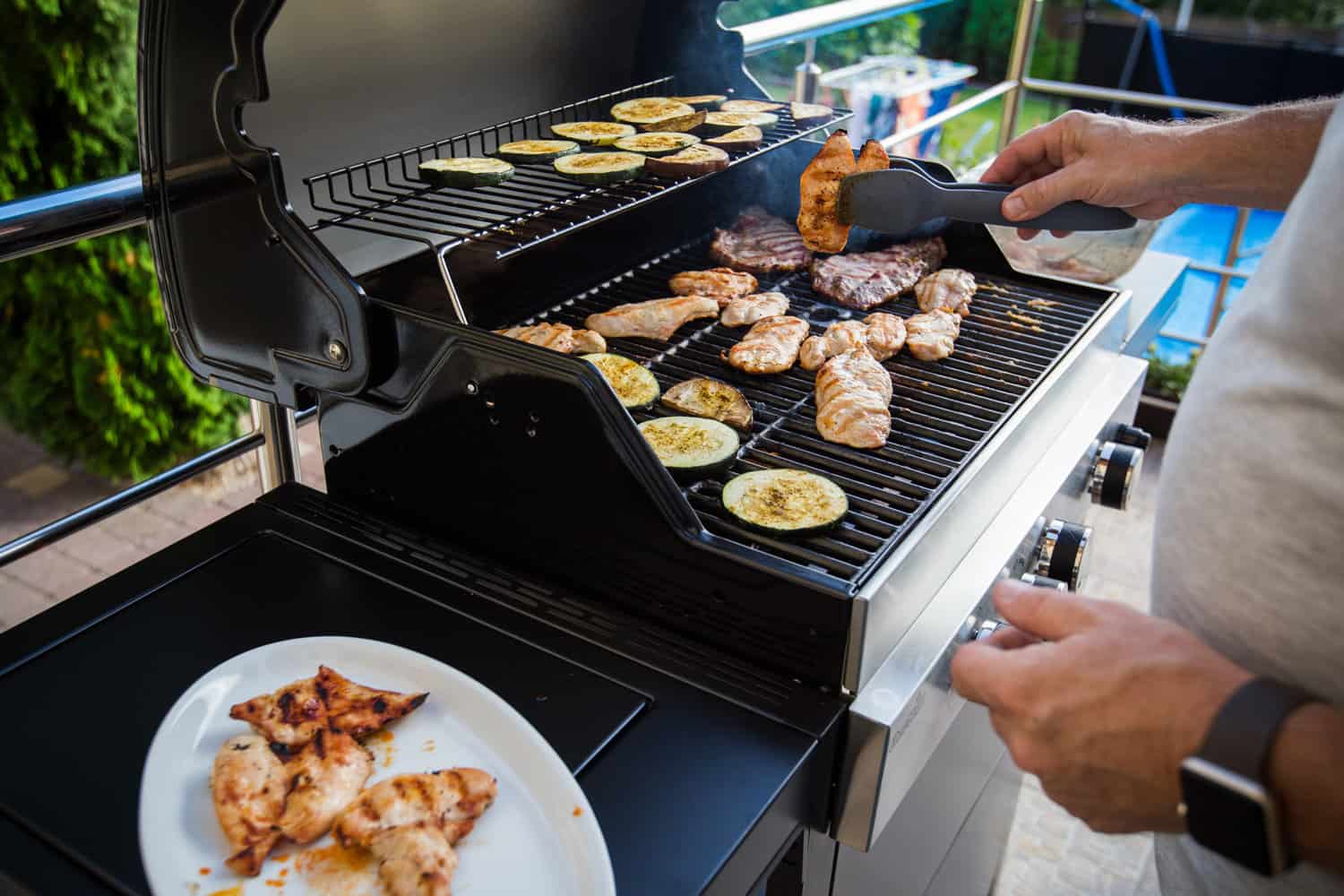
Follow the same procedure as above from step one through step three. Open the lid, attach the gas to the grill and then turn on the gas. Just how they ignite the grill differs.
In the lighting hole (tiny opening on the side of the grill), light a match. For the burner nearest to the lighting hole, fully open the regulator.
With the help of a second match, ignite the current match in the lighting hole. The burner should start burning once it is switched on.
Click here to see this match on Amazon.
Some grill models might not have any lighting holes or shoddy ones. To fire the grill in this situation, move as far away from it as you can while using a long stick match.
See this long stick match on Amazon.
Conclusion
As you can see, there are several ways to increase the BTU on a gas grill. Remember that the more BTU your grill has, the more fuel it will take to produce that power.
However, this fuel won't provide this kind of power unless the elements that make it effective, such as those described above, are considered.
Made it to the end? Check out these related articles below!






